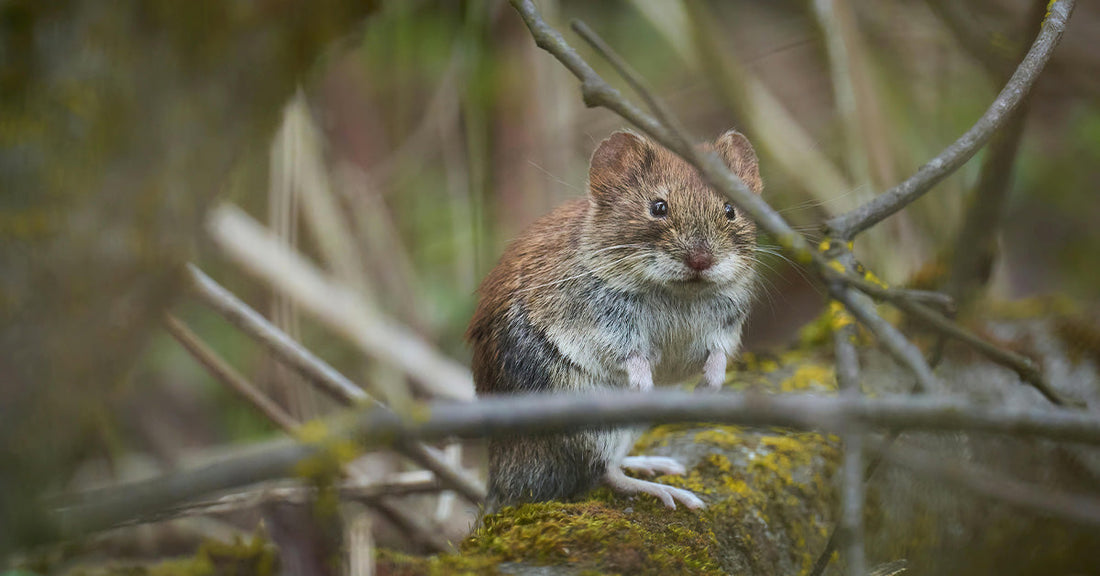Conservationists Are Using Glitter To Help These Critters Beat Extinction
Matthew Russell
Deep in the wetlands of Wales, a creative conservation experiment is glittering with promise. The country’s elusive and endangered water voles — small, shy rodents that play a vital role in their ecosystems — are at the heart of a new initiative that involves a surprising tool: edible cake glitter.
These rodents have suffered a dramatic 90% decline over the past few decades, largely due to habitat loss and relentless predation by invasive American mink. Once thriving across the UK, water voles now teeter on the brink of extinction in many regions, particularly in south Wales where they are nearly gone, the BBC reports.

Water voles in Wales have declined by up to 90% in 30 years.
Glitter That Tracks Without Trauma
Conservationists with the Initiative for Nature Conservation Cymru (INCC) sought a low-cost, noninvasive way to track vole movements in the wild. Traditional GPS tracking is too expensive and disruptive. So, they turned to something entirely unexpected: cake glitter.
By dusting slices of apple — a favorite treat — with veterinarian-approved, biodegradable glitter, researchers are able to trace the voles through their glitter-speckled droppings.
“It’s something we’ve done in nature conservation before,” INCC chief executive Rob Parry told Getaway, noting that Similar tactics had previously been used for badgers. “We’ve just scaled that idea down to water vole size.”

Conservationists are using edible glitter to track water vole movements.
The Glitter Test Begins
The first step in the plan involved captive-bred voles, part of a wider reintroduction program run by Natural Resources Wales (NRW). Researchers placed glitter-dusted purple apples on straw bedding inside the enclosures. At first, the treats were ignored. But after an hour, the apples had nearly vanished — a sign the voles were willing participants.Then came the moment of truth. Just 24 hours later, a sparkling droplet of confirmation appeared. A single piece of glitter-filled poop told scientists that the plan worked.
“To us, it was huge,” one INCC team member told Discover Magazine.
Mapping a Better Habitat
With glitter-tracking successfully trialed in captivity, the INCC now plans to expand the approach to wild populations. Using different glitter colors for different family groups will allow scientists to track patterns of movement, dispersal, and territory overlap.
This information is critical. Knowing whether voles use linear features like ditches or venture into open boglands can guide environmental planning.
“That will be crucial when it comes to planning for our upland habitats,” Parry told the BBC.
If conservationists can confirm which areas voles frequent, they can make site-specific improvements. That might include removing invasive trees, restoring overgrown wetlands, or fencing off vulnerable areas to keep livestock away. As BBC Newsround reports, the data gathered can also inform better decisions about where to reintroduce voles in the future.

Tracking wildlife helps scientists identify where to restore and protect wetland habitats.
Why It Matters
Though often mistaken for brown rats, water voles are critical “ecosystem engineers.” Their digging aerates the soil, promotes plant diversity, and encourages pollinator species to thrive. Their absence has ripple effects that degrade entire wetland ecosystems, Discover Magazine reports.
Unfortunately, the causes of their decline aren’t easily reversed. Wetlands have been drained, predators are widespread, and safe corridors for movement are limited. But thanks to this glitzy new approach, researchers are now better equipped to understand how to give water voles a real chance.
“We made them endangered,” Parry told Getaway. “It’s up to us to help them.”
Looking Ahead
The team behind the glitter experiment hopes their success will inspire others to look beyond traditional methods. By engaging local communities and expanding the use of simple tracking tools, they aim to create a future where water voles can quietly, and safely, reclaim their place in the wild.
Sometimes, it seems, the path to recovery sparkles — quite literally — in the most unexpected places.

